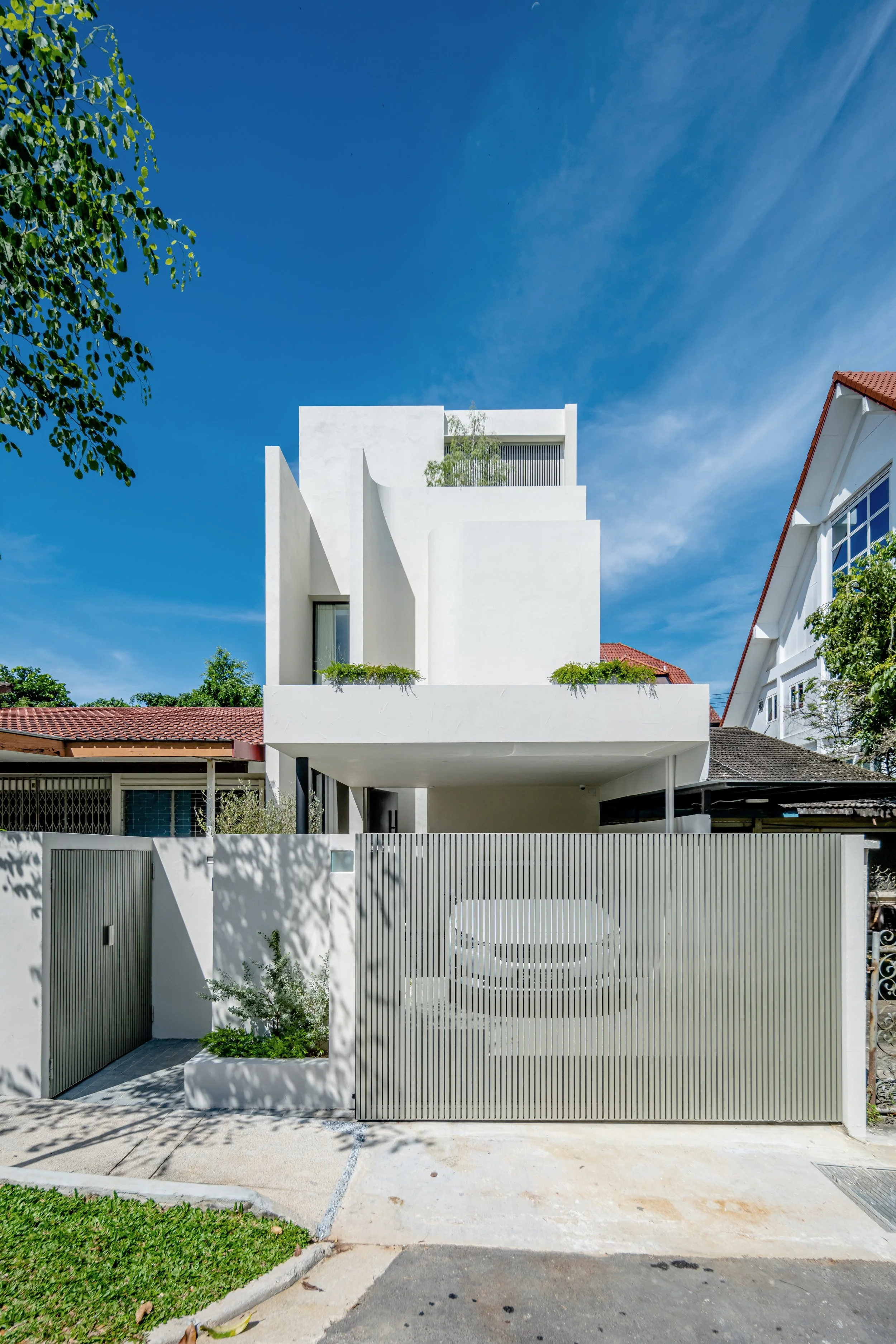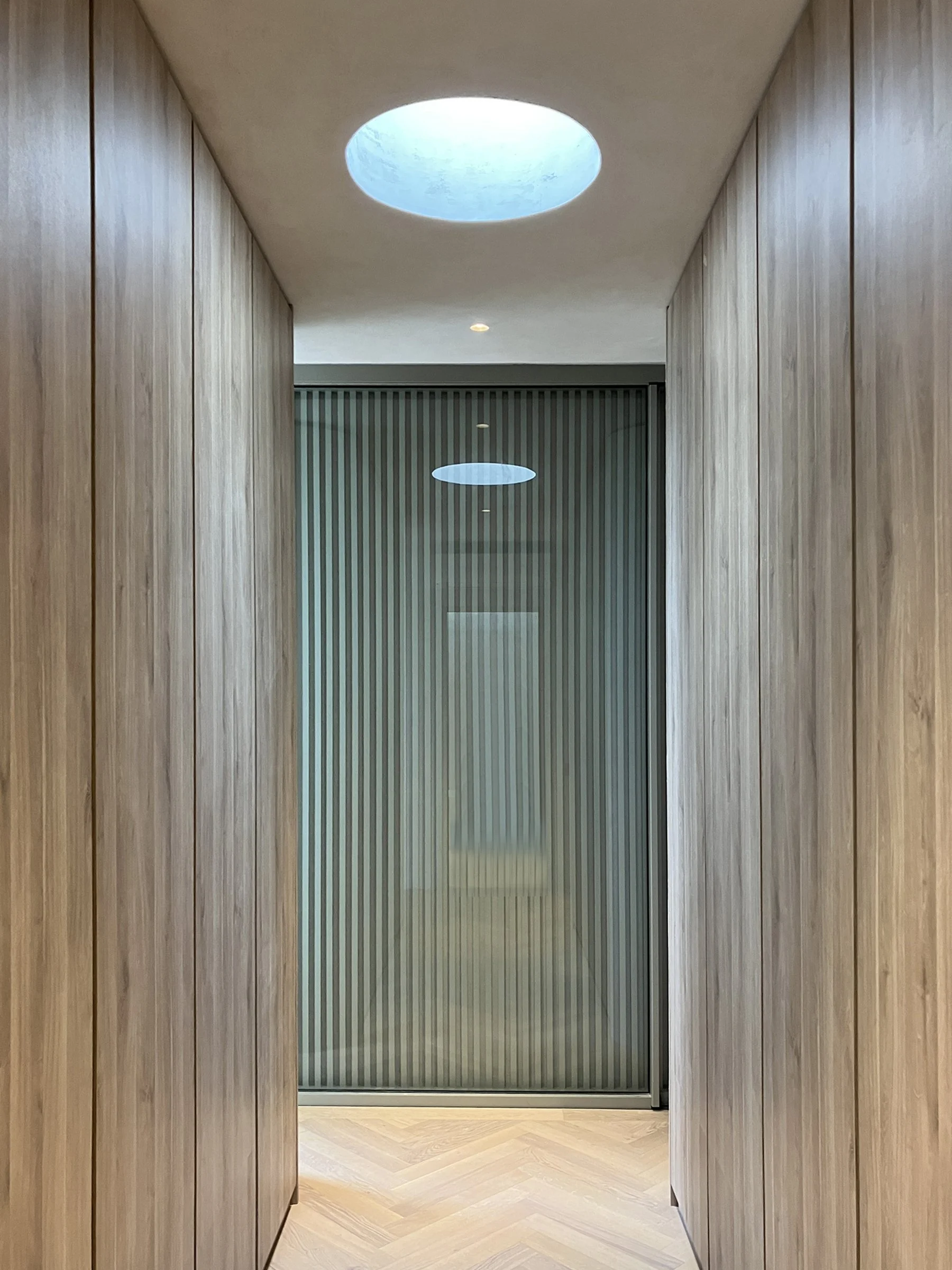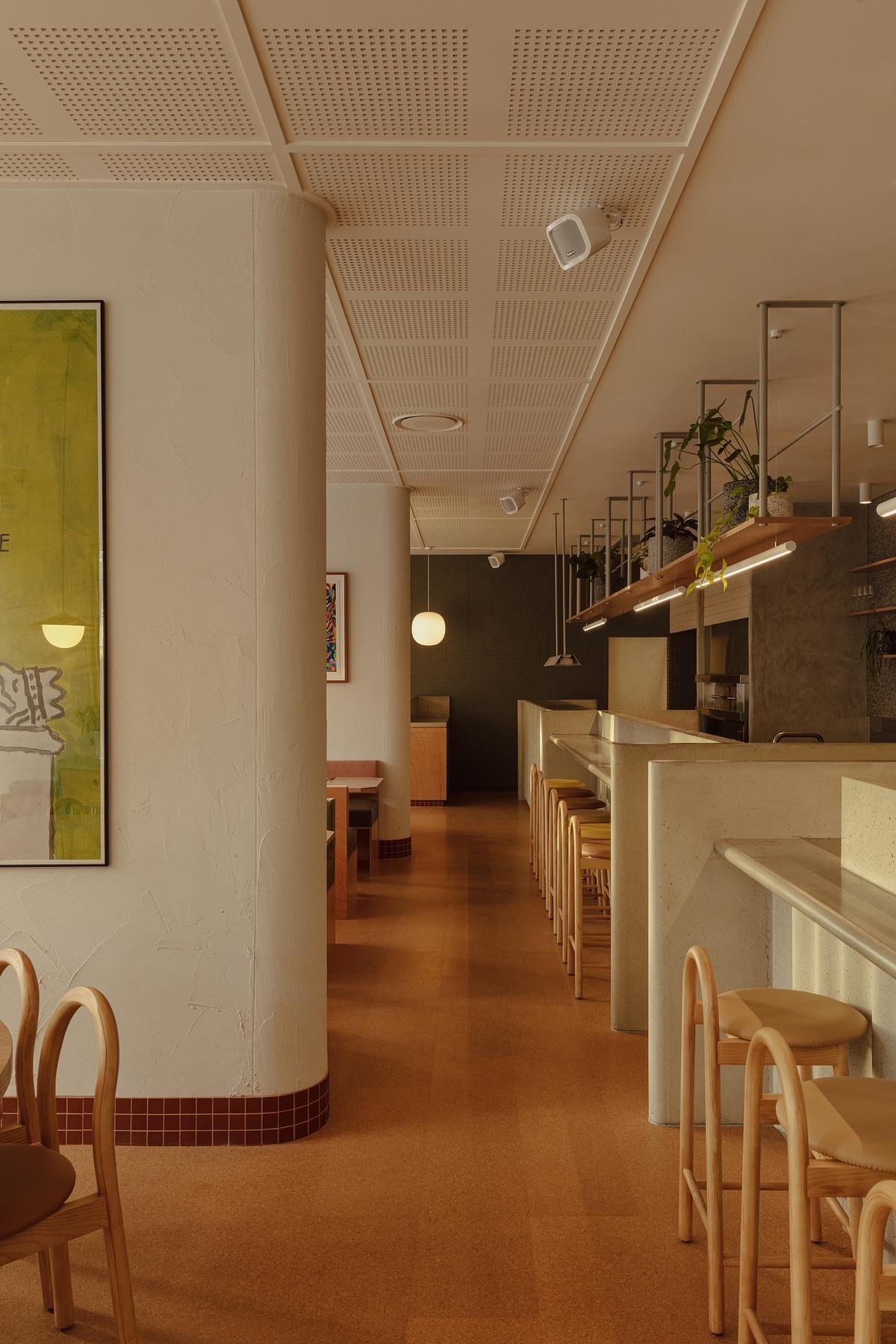
The Curlicue House by S+Arch
In the quiet neighbourhood of Sembawang Hills, The Curlicue House stands as a singular architectural gesture – a carefully sculpted home where monolithic form meets a delicate interplay of light, shadow, and nature. Conceived by Singapore-based studio S+Arch, the project reflects the practice’s ethos: an architecture to be felt through emotion, memory, and the senses; where space is not simply inhabited, but experienced.
Founded as a multi-disciplinary design studio, S+Arch approaches each commission with a holistic lens, seeing architecture, interiors, and landscape as inseparable layers of one lived experience. Their work favours spatial qualities that are both evocative and deeply attuned to their inhabitants – spaces of memory, senses, and spirit. The Curlicue House is a distilled expression of this philosophy: a bespoke residence whose quiet monumentality is balanced by moments of intimate tactility.
The home was commissioned by a couple – a legal professional and a risk specialist consultant – embarking on the next chapter of life, with a newborn on the way. Their brief was clear: a private, calming sanctuary, pared back in detail yet rich in spatial generosity, that could evolve with their growing family.
The plot, measuring just 6 metres wide and 31 metres deep, dictated a slender, linear plan. Within this compact footprint, S+Arch orchestrated a series of volumetric contractions and expansions – narrow corridors giving way to soaring double- and triple-height voids – creating a sense of release and anticipation as one moves through the home.
The couple’s lifestyle shaped the program. A large kitchen, occupying half the ground floor, sits beyond a central courtyard, flanked by the dining area and wine cellar, forming a convivial heart for hosting. An attic study, designed for work-from-home during the pandemic, includes a custom micro-cement desk and concealed pantry. A Catholic prayer room, lit by a delicate skylight, offers a place for quiet reflection. Sustainable measures – from photovoltaic panels to cross and stack ventilation via the central atrium – were seamlessly integrated into the architectural fabric.
Externally, the house presents as a solid mass, its curved façade walls softening the edges of its monolithic volume. In the afternoon sun, these forms catch the light in shifting tones, their surfaces seemingly animated in gentle movement. This outward solidity contrasts with an interior that feels open, breathable, and attuned to its landscape.
The material palette – lime wash plaster, micro-cement, oak timber, brushed metal, bush-hammered granite, and honed marble – was intentionally restrained. Finishes remain consistent across spaces, creating a quiet visual continuity. Tactility is central: cool stone underfoot, softly grained timber joinery, and the subtle grain of plaster walls. Together, these elements temper the architectural mass with warmth, grounding the home in a serene, minimal aesthetic.
Greenery is not merely an adjunct to the architecture but a constant presence in daily life. Upon entering, visitors are met by a grove of olive trees set against the warm, textured façade – a symbolic threshold that brings peace, abundance, and longevity to the home.
The long, narrow plan is punctuated by pockets of planting. A central open-to-sky courtyard draws natural light and breezes deep into the interior while framing views of foliage from the living room through to the rear garden. Taller trees with softer canopies were positioned in both courtyard and backyard to bring the upper floors into contact with nature; even the attic enjoys greenery through planters integrated into the terrace edge.
This blurring of boundaries extends vertically. The double-height living room looks onto the front garden through expansive glazing, setting up a visual axis that runs the full depth of the home. The result is a space that feels larger than its footprint, breathing with the rhythms of daylight and seasonal growth.
Spatially, The Curlicue House is experienced as a series of transitions – moments of compression followed by generous releases of height and light. The main entrance narrows into a curved-walled corridor before opening dramatically to the living hall, where a double-height void draws the eye to the garden beyond.
Circulation spaces are treated as more than functional links; they are transitional thresholds, each offering a shift in dimension or illumination that alters the mood. This approach reaches its height at the triple-volume air well above the central courtyard, where light moves across the curving surfaces, animating the architecture throughout the day.
Realising this vision required a tightly aligned team of client, architect, designer, and builder. The project emerged during the constraints of the COVID-19 pandemic, its progress shaped by a spirit of adaptability and close site coordination.
Defining moments included the joint decision-making on lighting and landscape, where subtleties of placement, scale, and material finish had significant impact. The olive trees at the entrance, the calibration of skylight apertures, the alignment of façade curves – each detail was refined through this shared process, ensuring the final home felt coherent and deeply personal.
In its final form, The Curlicue House achieves a rare balance: at once solid and ethereal, private yet connected to its surroundings. Its monolithic presence anchors it to the ground, while the interplay of light and curvature lends a sense of movement and life.
For S+Arch, the project distills their belief that architecture is not simply a visual exercise, but an emotional one – a lived experience that can be both grounding and uplifting. In the curved façades that catch the late sun, in the cool stillness of the prayer room, and in the gentle rustle of olive leaves at the entrance, The Curlicue House offers its inhabitants a place of calm, connection, and enduring beauty.






















